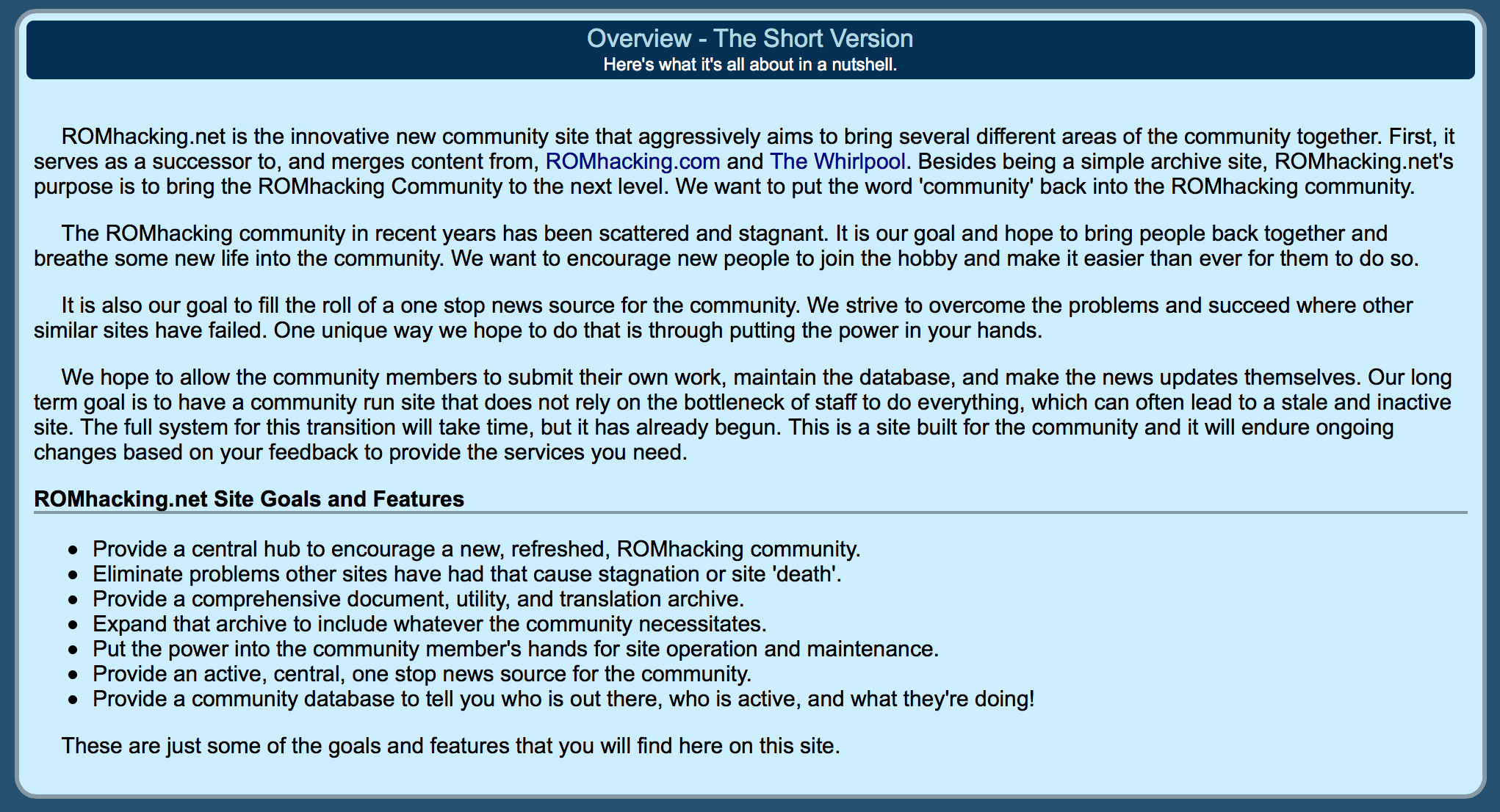Case Study: Correlating Code and Community on ROMhacking.net
As a case study, I have been looking at ROMhacking.net, a website devoted to the community of hackers and modders of games for (mostly) older platforms and consoles. "Community" is an important notion in the site's conception of itself and its relation to its users, as evidenced in the site's "about" page:

ROMhacking.net is a website that revolves around the circulation of computer code, in the form of modifications to game files (or ROMs). But the repetition of the term "community" here (seven times in the first two paragraphs alone) attests to the centrality of the collective effort, such that code is rendered the object and medium for the construction of communal feeling and interaction.
ROMhacking.net is the innovative new community site that aggressively aims to bring several different areas of the community together. First, it serves as a successor to, and merges content from, ROMhacking.com and The Whirlpool. Besides being a simple archive site, ROMhacking.net's purpose is to bring the ROMhacking Community to the next level. We want to put the word 'community' back into the ROMhacking community.Among other things, ROMhacking.net includes a vast collection of Super Mario Bros. mods (206 at the time of my data collection in December 2014; some of these include several variations, bringing the total number of modded ROMs up to 240). The "mods" in question are fan-based modifications of Nintendo's iconic game from 1985; they substitute different characters, add new levels, change the game's graphics, sound, or thematic elements, etc. — hence perpetuating an unofficial serialization process that runs parallel to Nintendo's own official game series, and establishing the basis of communal formations through more or less direct manipulation of computer code (either in the form of assembly language, hex code, or mediated through specialized software platforms, including emulators and tools for altering the game). In other words, the social superstructure of serial collectivity gets inscribed directly into the infra-ludic level of code, leaving traces that can be studied for a better understanding of digital seriality.
The ROMhacking community in recent years has been scattered and stagnant. It is our goal and hope to bring people back together and breathe some new life into the community. We want to encourage new people to join the hobby and make it easier than ever for them to do so.